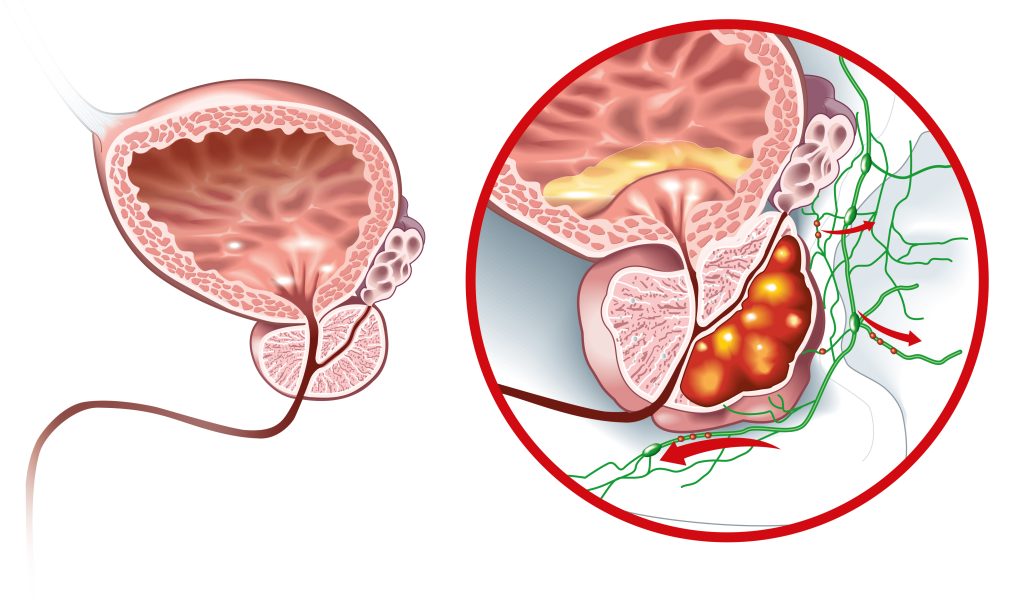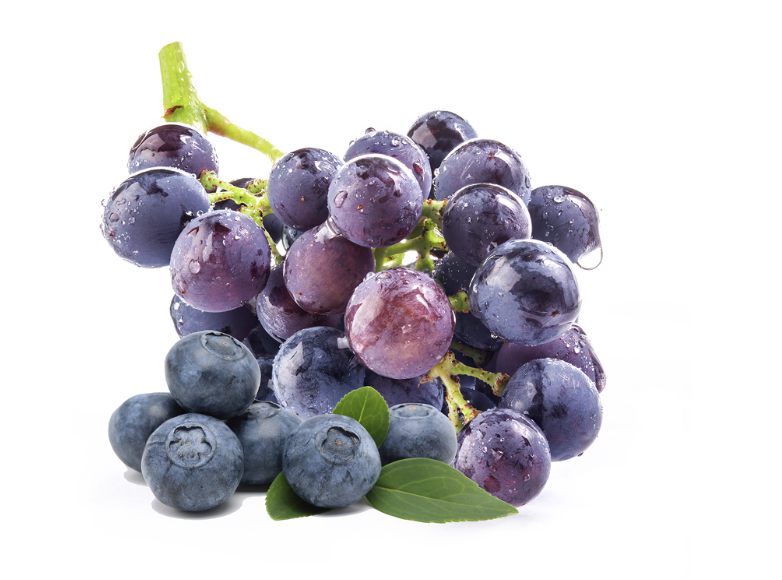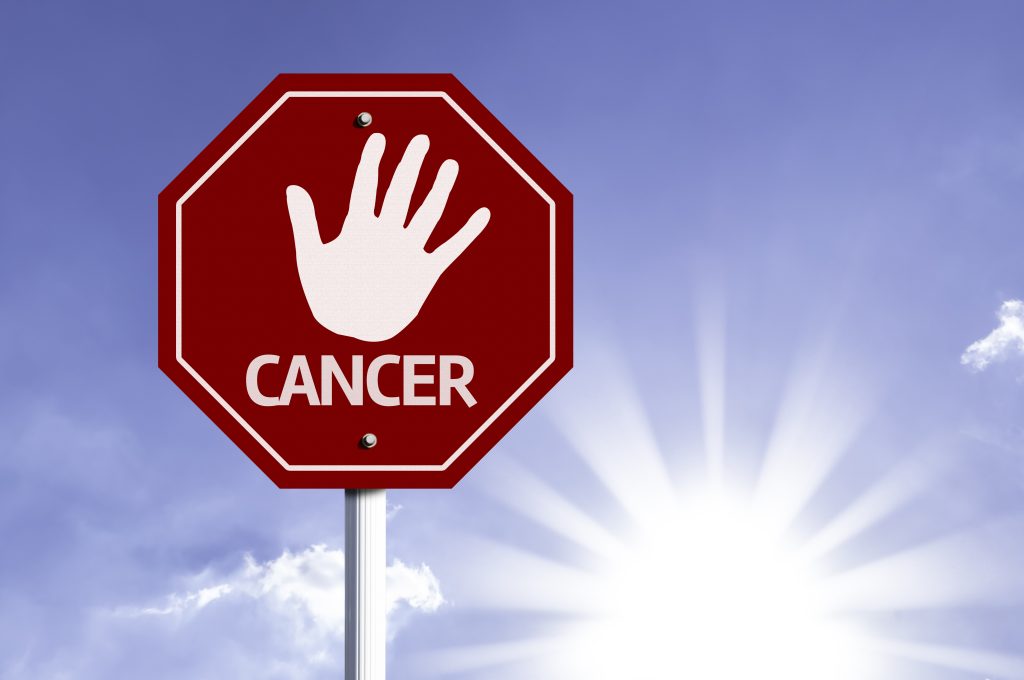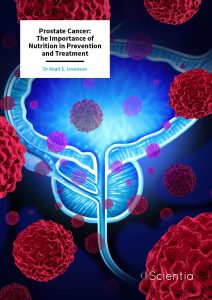Dr Anait S. Levenson | Prostate Cancer: The Importance of Nutrition in Prevention and Treatment
Prostate cancer is a leading cause of illness and death in men around the world, and to date, no prevention strategies have been discovered. Dr Anait S. Levenson and a team of cancer researchers from Long Island University in the United States of America are working to advance our understanding of how and why prostate cancer develops. Their important work also demonstrates how compounds found in foods such as grapes and blueberries may help prevent the development and progression of cancer.
Understanding Prostate Cancer
Cancer is a leading cause of death worldwide. In the United States of America, 1,898,160 new cancer cases and 608,570 cancer deaths were projected for 2021 but the reality for prostate cancer was even starker – an alarming increase was seen for both new cases and deaths.
There is currently no treatment available to prevent this type of cancer and 30% of men with risk factors placing them under active surveillance for prostate cancer develop more aggressive disease requiring intensive treatment such as surgery and hormone therapy (chemical castration), which have devastating effects on the individual and their quality of life.
As a result, scientists and healthcare professionals are dedicated to further understanding the pathways leading to prostate cancer and discovering new ways to prevent this disease. Dr Anait S. Levenson from Long Island University in the United States of America is one of the scientists driving a new understanding of the impact of diet on prostate cancer progression and prevention.
Understanding the underlying pathways of cancer progression is key to being able to optimise diagnostics, improve treatment and develop new medicines. Dr Levenson and her team are particularly interested in the molecular and genetic mechanisms of prostate cancer development and progression. To date, the team’s research has focussed on the MTA1 protein, an epigenetic molecule which is highly expressed in several types of cancer, including prostate cancer.
It is now known that MTA1 is involved in multiple stages of prostate cancer including inflammation, tumour growth and invasion. In addition to regulating survival pathways through various epigenetic modulations, MTA1 can impact molecules called microRNAs (miRNAs for short) which control multiple cancer development pathways, including enhancing cancer progression and the ability of the cancer cells to spread (a process known as metastasis). Dr Levenson and her team highlighted the role of MTA1 in prostate cancer progression by studying mice genetically modified to overproduce MTA1. Their research showed that mice with higher levels of MTA1 were more likely to develop cancerous prostate cells than mice with normal MTA1 levels.

Illustration of healthy prostate and cancerous prostate
Diet and Cancer Prevention
Although the link between a person’s diet and cancer risk is complicated, data have linked a diet high in dairy and fats with an increased risk of prostate cancer. More recently, diets high in certain fruits, vegetables, and soy foods have been associated with a decreased risk of prostate cancer.
As prostate cancer is an age-related and slow-growing disease likely influenced by nutrition, the use of diet for prevention and as an intervention alongside conventional treatment has huge potential. Nutrition-based intervention is a particularly exciting prospect given that there are currently no other preventative actions or treatment options available.
Most modern medicines are based on naturally occurring compounds. Currently, scientists around the world are investigating the effects of diets high in these compounds as well as how these natural compounds can be modified to make more effective medicines.
Dr Levenson’s team is currently investigating the preventive and therapeutic potential of naturally occurring compounds called polyphenols, which are found in plant-based foods such as fruits, vegetables, tea and dark chocolate. Previous studies have linked diets high in these compounds with a lower risk of developing cancer.
Importantly, Dr Levenson’s research has focused on a type of polyphenol produced by certain plants when under environmental stress. These polyphenols, called stilbenes, are known to have antioxidant, anti-inflammatory, antimicrobial and anti-tumour properties. There are over 400 types of natural stilbenes which can be found in foods such as grapes (including wine), blueberries and peanuts.
Dr Levenson’s team is currently working on resveratrol (which comes from grapes and is probably the most well-known stilbene), pterostilbene (which comes from blueberries), and gnetin C (which comes from the melinjo plant, commonly used in Indonesian food).
While the exact mechanisms underlying the beneficial effects of stilbenes are not yet completely understood, Dr Levenson’s team has shown how stilbenes can protect against prostate cancer by targeting MTA1 and altering miRNAs, leading to tumour-suppressing genes being turned on and thus, cancer progression and inflammation pathways being slowed down.

Grapes and blueberries contain high levels of stilbenes
Stilbenes in Practice
In 2013–15, Dr Levenson’s team treated prostate cancer cells in the lab with resveratrol (a polyphenol found in grapes and wine) and pterostilbene (a polyphenol found in blueberries). They discovered that these compounds suppressed the growth rate of tumour cells and that pterostilbene was more potent than resveratrol in inhibiting MTA1.
Following on from this, the team treated mice which were genetically modified to overproduce MTA1 with a pterostilbene-supplemented diet. They found that the mice with higher levels of MTA1 were more likely to develop cancerous prostate cells than mice with normal MTA1 levels. They also discovered that the mice who had eaten a pterostilbene-supplemented diet had reduced levels of MTA1, and certain miRNAs, and subsequently, showed fewer cancerous prostate cells.
In 2020, the team added grape powder (which contains both resveratrol and pterostilbene) to the diet of mice who were genetically predisposed to developing prostate cancer. They found that the mice who were treated with grape powder had lower levels of tumour-causing miRNAs and that these mice had less abnormal prostate cell growth.
Less is known about gnetin C, a resveratrol dimer, most commonly found in the melinjo plant, which is part of Indonesian cuisine. In an impressive series of experiments, Dr Levenson’s team treated mice with prostate overexpressing MTA1 with gnetin C, resveratrol, and pterostilbene, and found that gnetin C was much more efficient at slowing tumour progression than either of the other two compounds.
By analysing the prostate tissue, the team could see that gnetin C slowed the progression of prostate cancer by reducing cell division, inflammation, and the formation of new blood vessels and by inducing cell death (apoptosis). These studies highlight the role that MTA1 and miRNAs play in prostate cancer development and demonstrate that dietary stilbenes can reduce prostate cancer progression.
Dr Levenson’s findings have exciting implications for the future of prostate cancer prevention and treatment. The team’s latest findings show how including more stilbene-containing foods in our diets may help protect both the general population and ‘at risk’ patients from prostate cancer. In a recent publication, Dr Levenson stated ‘A substantial portion of prostate cancer cases could be prevented by applying effective “prostate cancer-specific diets” that contain bioactive dietary polyphenols and micronutrients’.

The Future of Stilbenes
Whilst there have not yet been any human trials on the effect of stilbenes on prostate cancer development, the future of these compounds is bright as the evidence increases to support their use to prevent and treat cancer. These natural dietary compounds have been shown to protect against prostate cancer in mice, and remarkably, they have been shown to make drug-resistant cancer cells in the laboratory sensitive to treatment again. Whilst the significant amounts of stilbenes in foods such as blueberries and grapes may help to prevent cancer from developing, the ability to modify these natural substances into potent anticancer drugs is a thrilling development in the quest to provide better outcomes for cancer patients.
SHARE
DOWNLOAD E-BOOK
REFERENCE
https://doi.org/10.33548/SCIENTIA895
MEET THE RESEARCHER

Dr Anait S. Levenson, MD, PhD
College of Veterinary Medicine
Long Island University
Brookville, NY
United States of America
Dr Anait S. Levenson obtained her medical degree from the Second Moscow State Medical Institute and then went on to receive a PhD in Clinical Immunology from the Institute of Tuberculosis, Moscow. Dr Levenson’s interests lie in cancer research and pharmacology. Her research group focuses on understanding the molecular and genetic pathways leading to prostate cancer progression and metastasis, as well as investigating the potential of natural dietary compounds known as stilbenes for cancer prevention and treatment. Dr Levenson is an internationally recognised leader in nutritional cancer chemoprevention, and she has published over 60 journal articles and seven book chapters. She is an active member of several leading professional societies including the American Association for Cancer Research, the New York Academy of Sciences, and the American Council for Medicinally Active Plants where she served as President for two years (2020–2022).
CONTACT
E: Anait.Levenson@liu.edu
W: https://liu.edu/VetMed/Research/~/link.aspx?_id=9461DEF1473B4953861BDD44D6CAB276&_z=z
KEY COLLABORATORS
Dr Avinash Kumar, PhD, Long Island University, Brooklyn, United States of America
Dr Swati Dhar, PhD, NeilImmuneTech, Inc, Chicago, United States of America
Dr Agnes M Rimando, PhD, United States Department of Agriculture (sadly deceased in 2018)
Dr Janice M Lage, MD, St. Michael’s Hospital, Toronto, Canada
Thanks are also given to the numerous students, laboratory members and collaborators who have supported this research over the years
FUNDING
National Institutes of Health/National Cancer Institute
Department of Defence Prostate Cancer Research Program
The California Table Grape Commission
FURTHER READING
R Hemani, I Patel, N Inamdar, et al., Dietary Pterostilbene for MTA1-Targeted Interception in High-Risk Premalignant Prostate Cancer, Cancer Prevention Research, 2022, 15(2), 87–100. DOI: https://doi.org/10.1158/1940-6207.CAPR-21-0242
P Parupathi, G Campanelli, RA Deabel, et al., Gnetin C Intercepts MTA1-Associated Neoplastic Progression in Prostate Cancer, Cancers, 2022, 14(24), 6038. DOI: https://doi.org/10.3390/cancers14246038
T Joshi, Patel I, Kumar A, et al., Grape powder supplementation attenuates prostate neoplasia associated with Pten haploinsufficiency in mice fed high-fat diet, Molecular Nutrition & Food Research, 2020, 64(16), e2000326. DOI: https://doi.org/10.1002/mnfr.202000326
S Dhar, A Kumar, L Zhang, et al., Dietary pterostilbene is a novel MTA1-targeted chemopreventive and therapeutic agent in prostate cancer, Oncotarget, 2016, 7(14), 18469-84. DOI: https://doi.org/10.18632/oncotarget.7841
S Dhar, A Kumar, AM Rimando, et al., Resveratrol and pterostilbene epigenetically restore PTEN expression by targeting oncomiRs of the miR-17 family in prostate cancer, Oncotarget, 2015, 6(29), 27214–26. DOI: https://doi.org/10.18632/oncotarget.4877

REPUBLISH OUR ARTICLES
We encourage all formats of sharing and republishing of our articles. Whether you want to host on your website, publication or blog, we welcome this. Find out more
Creative Commons Licence (CC BY 4.0)
This work is licensed under a Creative Commons Attribution 4.0 International License. 
What does this mean?
Share: You can copy and redistribute the material in any medium or format
Adapt: You can change, and build upon the material for any purpose, even commercially.
Credit: You must give appropriate credit, provide a link to the license, and indicate if changes were made.
SUBSCRIBE NOW
Follow Us
MORE ARTICLES YOU MAY LIKE
Professor Giorgio Buttazzo | Artificial Intelligence and a Crossroads for Humanity
Where do we stand with artificial intelligence? Might machines take over our jobs? Can machines become conscious? Might we be harmed by robots? What is the future of humanity? Professor Giorgio Buttazzo of Scuola Superiore Sant’Anna is an expert in artificial intelligence and neural networks. In a recent publication, he provides considered insights into some of the most pressing questions surrounding artificial intelligence and humanity.
Dr Ralf Adam | New Technologies Shaping the Future of Oral Hygiene
Understanding the efficiency of various toothbrush technologies is essential for achieving optimal oral health. Dr Ralf Adam, who leads a dedicated team at Procter & Gamble in Germany, is keen to investigate the complexities of these technologies. His team have provided new insights into the best toothbrush types for plaque removal and the maintenance of gum health. By highlighting the importance of informed oral care decisions and ongoing investigations, this vital research works towards ensuring everyone can achieve a brighter, healthier smile.
Professor Martin Trefzer | Bridging Nature and Artificial Intelligence for Smart Electronics Technology
The ever-developing world of artificial intelligence (AI) stands at the tip of a transformative breakthrough. Professor Martin Trefzer from the University of York and Professor Jim Harkin from Ulster University have introduced a revolutionary approach to neural network design. They work on an electronic system based on AI that forms the basis of the cross-disciplinary project called Nervous Systems, which aims to build electronic neuromorphic devices with an artificial intelligence system mirroring the adaptability and responsiveness of biological neural systems.
Dr Toby Phesse | Revealing the Mysteries of Wnt Signalling: Novel Approaches to Beating Cancer
Cancer remains a leading cause of mortality worldwide, and the need for new, more effective treatments remains an urgent challenge. Dr Toby Phesse from Cardiff University in the UK focuses on the role of the Wnt receptor found on the surface of cells and its involvement with cell communication and cancer growth, bringing fresh hopes for new therapeutic options.





